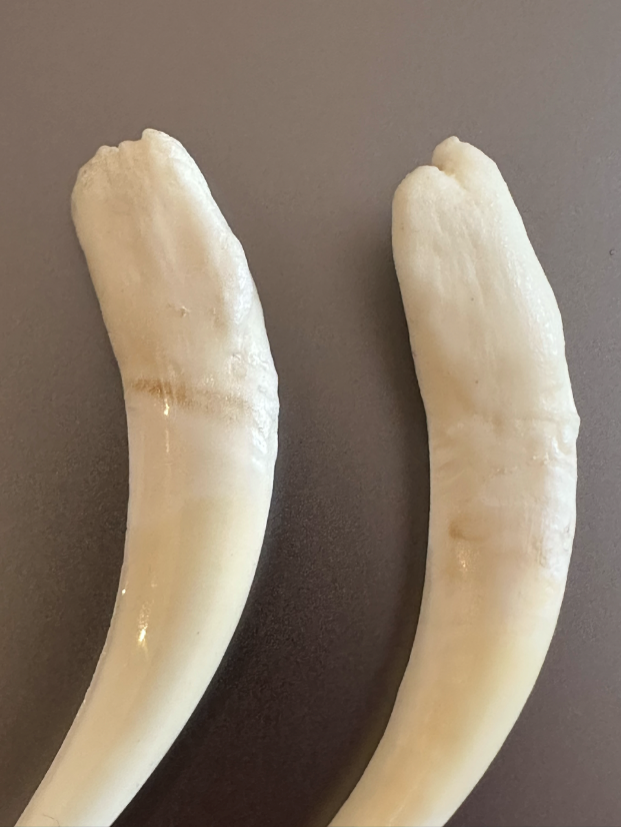Chinese Water Deer
(Hydropotes inermis)
The Trophy
Chinese Water Deer have no antlers; instead, they have long protruding canine teeth referred to as tusks. Chinese Water Deer bucks are defined in three stages which are juvenile, adult, and mature. In juvenile animals the root of the tooth is open, straight edged and the upper tooth walls are thin. In adults the root is no longer fully open, will be rounding but may still have a visible cavity. In mature animals the root is fully closed over with no visible cavity. Canines that are broken or worn are not considered to be atypical and can therefore be evaluated as normal. The teeth must be removed from the upper jaw before the evaluation.
Key Features For Measuring Tusks
- In adult and mature animals, the length along the outer curve and the tusk circumference are key scoring parameters. In addition, points will be awarded for:
b. the visible presence of the Incisal nerve.
c. where both tusks have fully closed roots.
- Chinese Water Deer canines must have a drying out period (after preparation) of at least 30 days before evaluation.
- Juvenile bucks, that is those with fully open roots, are not eligible for evaluation.
Trophy Points Required
Phenotype | Bronze | Silver | Gold |
Chinese Water Deer | 220 | 250 | 280 |
Chinese Water Deer (introduced) | 220 | 250 | 280 |
Copyright © 2023 CIC UKTEB. All content, imagery and rights belong to the International Council for Game & Wildlife Conservation United Kingdom Trophy Evaluation Board (CIC UKTEB)






